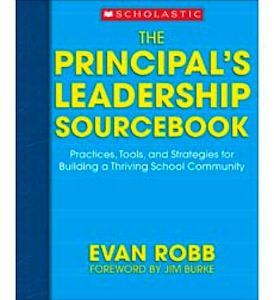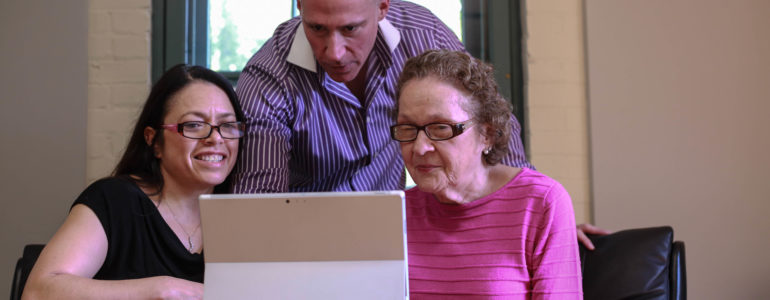
To succeed in school, compete in the job market, and become a contributing citizen in our democracy and the global economy, our students need to learn in classrooms that develop the four 21st century skills, called the 4 Cs: Communication, Collaboration, Critical Thinking, and Creativity.
You can motivate and engage teachers to consider what kinds of instruction develop these skills by having them learn during faculty meetings in ways that you want their students to learn. When teachers experience great 21st-century classrooms, innovative types of learning become a part of teachers’ DNA and open conversations about how the 4 Cs will impact learning in their subjects.
TEACHERS EXPERIENCE THE 4CS DURING FACULTY MEETINGS
I recommend that you set aside three faculty meetings for teachers to experience the 4 Cs and connect what they’ve learned to classroom practices. It makes no sense for principals to expect students to collaborate and problem solve and then lead faculty meetings where teachers passively sit and receive information. A faculty meeting can and should model expectations for how teachers interact with students in the classroom.
To get the process going start by dividing teachers into groups of four to six and have them choose articles to read about the 4 Cs and 21st-century classrooms before your faculty meeting. In the box below, I’ve created links to five sources.
READING RESOURCES TEACHERS CAN USE
- 5 Ways to Prepare Your Students for the 21st Century (Oxford University Press English Language Teaching Global Blog)
- Preparing 21st Century Students for a Global Society (nea.org)
- The Critical 21st Century Skills Every Student Needs and Why (globaldigitalcitizen.org)
- 10 Signs of a 21st Century Classroom (Edutopia)
- How 4Cs Can Transform Learning
FIRST FACULTY MEETING
- Organize faculty into groups of four to six, introduce the 4Cs of 221st-century learning, and invite teachers to discuss why these are important for the challenges our country and the world face today.
- Have each group choose a spokesperson and share with everyone what their group discussed. Record teachers’ ideas on a whiteboard. Have teachers choose two articles to read.
- Close the meeting by asking teachers to discuss and share ways they can integrate into their classrooms: communication, collaboration, critical thinking, and creativity.
- Have a reporter for each group write on chart paper their top three ideas and share with the faculty to end the meeting.
SECOND FACULTY MEETING
- Recap what was discussed at the first meeting by posting the teachers’ ideas you recorded on chart paper.
- Have groups read a different article, discuss it focusing on: Communication, Collaboration, Critical Thinking, and Creativity.
- Repeat how you ended the first meeting. This might seem repetitive but it is not. It is valuable to spend time on what is important; the revisit helps communicate this important message to staff.
ACCEPT WHERE TEACHERS ARE IN THE PROCESS
You’ll find that even with reading and discussing articles, teachers depth of understanding will vary, this is perfectly fine. Like their students, their background knowledge and personal experiences will determine the types of suggestions they offer. But over time, if made a focus, staff can collectively come to a deeper understanding of the 4C’s.
Below you’ll find some examples of how teachers at your school can foster and build 21st-century skills into students’ learning experiences. It’s helpful for teachers to discuss these suggestions through the lens of how each one fits into their subject.
- Encourage teachers to abandon rows of desks that only separate and isolate students. For collaboration to take place and for students to have opportunities to choose and discuss materials, they need to sit in groups and work together or separate into partners who report back to the group. Remember sitting in groups but doing the same work done in rows is not effective.
- Initiate student-led literary discussions. Have teachers build on the turn-and-talk strategy that asks students to turn to a classmate and discuss questions about a read-aloud text or an aspect of a lesson. The next step might be having students discuss a text for 5 to 20 minutes with a partner, using questions the students themselves composed. Then, students can make the transition to small-group discussions.
- Use inquiry learning. Put the questioning process into students’ hands by asking them to compose interpretive, open-ended questions. (A question is open-ended if it has two or more answers that text evidence supports.) This is a powerful technique because students need to collaborate and communicate to write open-ended questions; they also need a deep knowledge about, and an understanding of, the reading material. Teachers can also show students how to compose guiding questions, which works well when groups read different books in a particular genre or on a specific theme. A guiding question is broad and can’t be answered in one or two sentences.
- Integrate technology by asking all faculty members or specific departments to read an article on their computers shared through a Google Doc. Then, let the communication begin! Teachers write their responses to an article and pose questions so everyone who received the article can read all the responses and questions.
- The next step might be to use Google Docs with students. For example, teachers can post a short reading selection on Google Docs for students and have them respond to questions in writing. Students can use the articles and all responses for a whole-class discussion. Also, students can collaborate and write a blog, informational piece, play, and so on and post their work on Google Docs for peers to read and respond to.
- Use the jigsaw strategy. If you have several questions you want students to discuss, divide the work among groups. Give each group a question and have them discuss it. Once groups discuss, they choose a spokesperson who explains the ideas discussed in the class. Not only does jigsaw advance all the 4Cs, but it also moves lessons forward.
- Try chat centers, a spin-off of jigsaw that gets students out of their seats and moving around the room. You can put questions about literary elements, vocabulary, or a text all students have read or listened to on five to seven sheets and post them around the room. Assign each group a chat center, have members discuss the questions and then present their findings to the class. To communicate clearly and effectively, students have to adjust and clarify their ideas so that their classmates understand their thinking.
CLOSING THOUGHTS
Encourage teachers to work closely with a colleague, choose a strategy they’d like to implement, share ideas, observe one another’s classes, debrief, and when they’re both comfortable, try another one. I always invite teachers to start small and add new strategies slowly to ensure success and maintain the desire to develop the 4Cs in all students. The 4C’s are often referred to as 21st Century Skills; soon it will be 2018 all schools should focus on these skills!
Check out my book! Principal’s Leadership Sourcebook, Scholastic, By Evan Robb

Check out my Facebook page! Give me a like and a follow!
Got a YouTube page too with some great videos in education!
![]()













